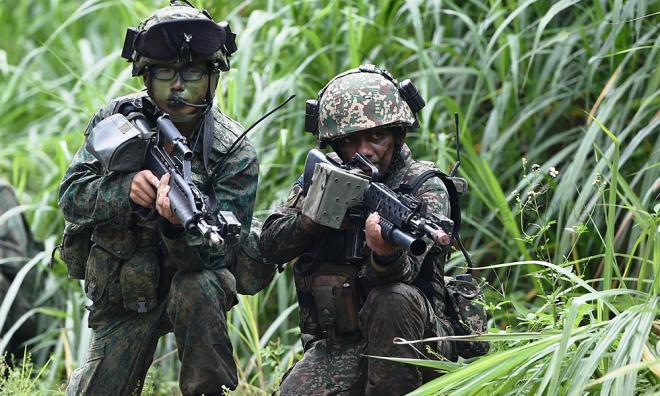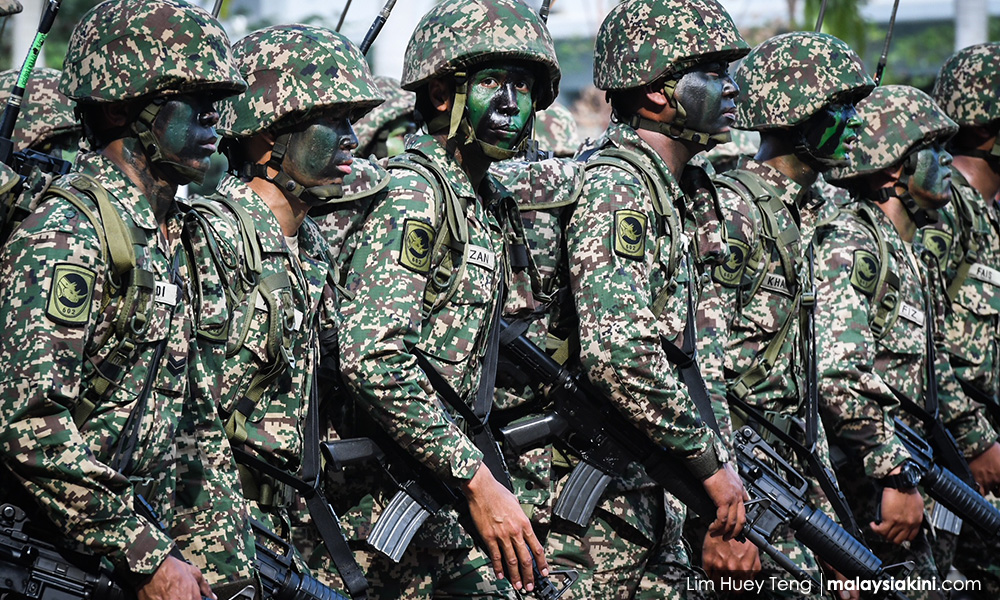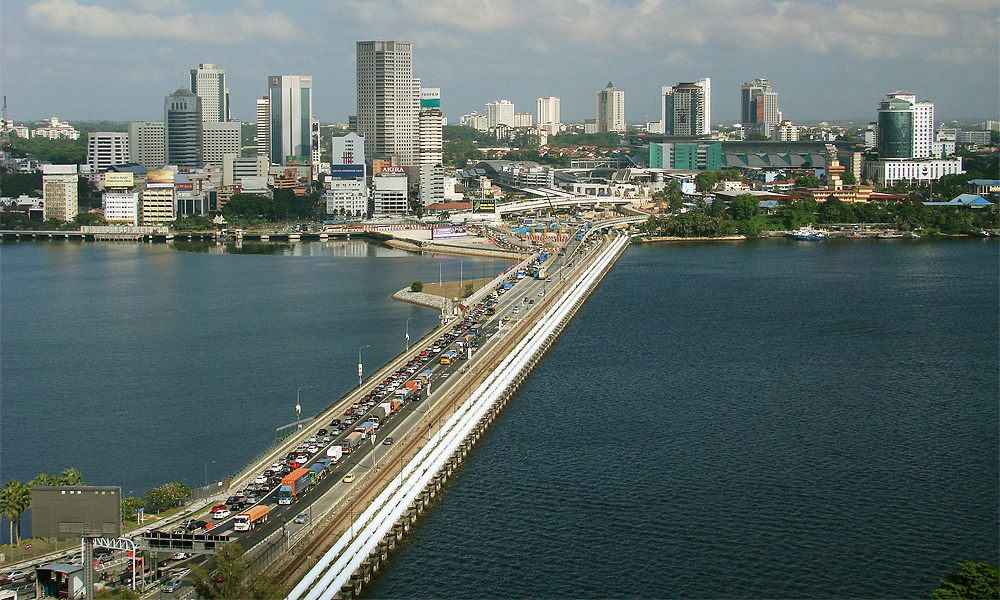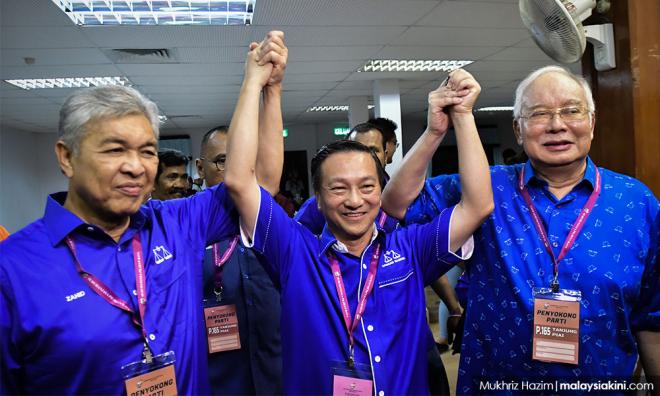
Published by Malaysiakini, images from Malaysiakini.
The time has come for both Malaysia and Singapore to seriously look into the idea of entering a new era of bilateral cooperation in the form of mutual defence and security arrangements and setting aside historic suspicions and prejudices, as embodied by a spirit of entente cordiale, a French term for warm understanding.
Such cooperation can be defined as involving both joint-military exercises as well as technological transfer or collaboration. This inevitably requires a paradigm shift in diplomatic approach and perspective vis-à-vis defence and security matters, as of all the issues involving bilateral cooperation, defence and security arrangements seems to be the least of concern for Malaysia and Singapore.
Main logic
And far from weakening the Five Power Defence Agreement (FPDA) dating back to 1971 with the UK, Australia, and New Zealand, bilateral cooperation should be viewed as strengthening (complementing and supplementing) the existing or traditional framework.
In fact, given the spreading out of the UK’s limited military resources and assets around the world, it is, therefore, an imperative that both Malaysia and Singapore take the initiative and steps to directly (without the need for any intermediation) and mutually align their strategic interests in defence and security.
Malaysia and Singapore should proceed to form the core (which is logical and natural) within the FPDA so as to reduce “over-reliance” on the UK as the major player (and secondarily, Australia).
Specific benefits
In doing so, Malaysia, in particular, would be compelled to thereby seriously focus on enhancing its defence and security needs and requirements as a form of fiscal (spending) and material (resource, asset) discipline.
More importantly (in going beyond the FPDA), not only would bilateral cooperation between the two countries contribute towards overall bilateral relations or ties but also boost the military-industrial and technological capacity of our own domestic defence sector via technological and technical transfer and sharing from Singapore under various collaborative initiatives. In turn, this could help to reduce our overall balance of payments (BOP) and ease our fiscal burden.
As part of our military strategy, we look to develop our projectile and missile-centric defence systems by looking to China instead of “un-costed” (for lack of a better word) spending on acquisition and procurement of new fighter jets even from “less expensive” countries such as Russia and Turkey.

With this proposed arrangement, savings and opportunity costs could be further reduced and an expenditure approach more aligned with the Finance Ministry’s zero-based budgeting could be secured. And not least, Singapore could be a strong and close defence and security partner/ ally in providing us with military assets that are more suitable and specific for our own contexts and needs.
It cannot be strongly emphasised also that burden-sharing (personnel and assets) could also ensue as a consequence of such cooperation. For example, the burden of existing joint-patrol activities along the Straits of Malacca could be borne by Singapore in providing the majority of naval and maritime assets. With this, Malaysia could more effectively shift its own assets to contribute towards beefing up the Eastern Sabah Security Command (Esscom).
Existing joint-patrol activities could also be elevated or upgraded into joint-amphibious operations and proper littoral defence (complementing and supporting air defence). Airspace defence and security cooperation – going beyond bilateral search & rescue (Sarex) drills – could also be forged and fostered within the radius of both countries’ borders.
Just as critically, Singapore’s advancement in 5G military technology and its C4 capabilities (command, control, communications and computers) that aim to transform and transition the Singapore Armed Forces (SAF) into a 3G (3rd Generation) fighting force has enabled the integration of augmented reality into the digital management of battlefield operations would allow us to leapfrog into the Fourth Industrial Revolution in defence and security hardware and software.
Our own domestic defence science and technology industries would enjoy cost-savings (financial and transactional) whilst perhaps reaping the benefit of shorter production and delivery output or result time also.
To ensure the realisation of such a critical area in bilateral cooperation, it is essential for other countries/parties to be prepared to be open to sharing its own comparative advantages. Malaysia ought to be open to allow its space for use by the SAF (in particular the Singapore Army and the Republic of Singapore Air Force or RSAF) for training and operational purposes.
Instead of viewing each other as a potential aggressor, both countries should make the bold and creative move to conceptualise their contiguous territory as reciprocal extensions for defence purposes against a common external threat. Johor then, instead of being a battlefield involving both countries, would be a buffer zone for joint-defence. Singapore could serve as the naval base or joint-littoral defence with the Straits of Johor providing a natural chokepoint to be used as an advantage in safeguarding and denying access.
Singapore, on the other hand, ought to be open in helping to foster and nurture the development of Malaysia’s nascent military sector (as exemplified in DRB-Hicom Defence Technologies (Deftech)) by perhaps entering into joint-ventures (JVs) with the companies involved to upgrade the existing products into (more) advanced levels of sophistication.
Examples would be unmanned aerial vehicles (UAVs) and armoured vehicles (AVs). Moving forward, our defence sector and industry must envisage and conceptualise a time when AVs and multi-purpose AVs are fully functionally integrated with and coordinated by smart information systems (such as the Hunter which is Singapore’s first digitalised combat vehicle).
Action plan
Towards attaining this win-win scenario, both countries could start by resolving outstanding bilateral issues such as the current maritime boundary delimitation vis-à-vis Port of Johor and Port of Tuas.
Even as these sensitive issues have yet to achieve their satisfactory conclusion yet, both sides could publicly declare their commitment to defence and security cooperation in the closest form and shape possible under the purview of the respective defence ministries which would lead to the formation of a Joint-Ministerial Committee for Defence and Security Cooperation.

Thereafter, a joint-technical working committee could be set up to identify and determine specific areas of cooperation with a secretariat under its wing to bring in the relevant stakeholders who would then produce a white paper (subject to the scrutiny of the Parliamentary Select Committee on Defence and Home Affairs) to serve as blueprint and strategic plan.
End-game
In conclusion, whilst not having regional integration per se as its ultimate purpose, bilateral cooperation on defence and external security matters will definitively enhance and facilitate the Southeast Asian region’s own security especially in the Straits of Malacca and the South China Sea.
It would be unsurprising if China becomes suspicious about Malaysia-Singapore military collaboration because of its implications for the former’s approach to the South China Sea problem. However, it is argued that the prospect of China hardening its position in terms of its military presence in the South China Sea as a response should not deter but embolden Malaysia-Singapore military collaboration.
For China would then be faced with the prospect not of arms race or rivalry within the region but of cooperation – in other words, a united front but without necessarily being confrontational. That is to say, the situation does not involve Asean in toto but only certain member-states with overlapping territorial claims with China (and in the case of Singapore as a contributor to the peace and integrity of the sea lanes passing through Asean).
Malaysia will be sending a strong message that we are seriously prepared to protect and uphold our territorial integrity as a normal course of action. And at the same time, Malaysia is avoiding the scenario of regional (and by extension a larger grouping with Asean plus US, India, etc) counter-balancing China. In other words, this would not be perceived as a sort of containment strategy in relation to China.
Be that as it may, bilateral defence and security cooperation is surely one way in which both Malaysia and Singapore can rediscover and reignite their pre-separation affinity particularly in reference to the backdrop of the threat posed by the Communist Party of Malaya (CPM).
Back then in the early 1960s, there was fear that Singapore could become the next Cuba on Malaya’s doorstep and hence merger. While the nature of the security threat has changed drastically especially now with the Hat Yai Peace Accord (1989), domestic concerns now have transposed onto external security concerns and in this, both Malaysia and Singapore continue to have shared interests.
Jason Loh Seong Wei is Head of Social, Law and Human Rights at EMIR Research, an independent think tank focused on strategic policy recommendations based on rigorous research.

